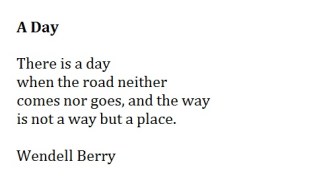“How does one determine the proper way to keep Shabbat?” I get that question regularly from Jews who do not follow halachah traditionally, but who do not consider it irrelevant, and want a means of deciding such things as whether to write or ride or use electricity then.
Because the commandment to keep Shabbat appears in the Torah adjacent to the discussion of building the desert sanctuary (the Mishkan), the Rabbis interpret Shabbat work to include any item connected with that sanctuary’s sacrificial cult—thirty-nine activities in all, including sowing and plowing, kneading and baking, spinning and tearing, slaughtering and writing, kindling or dousing a fire, and so on (Mishnah Shabbat 7:2).
Liberal-minded Jews often wonder about these things. Kindling fire was difficult work back then, they say, but flicking an electric switch is hardly backbreaking labor. Their bafflement is understandable, but they miss the biblical point. While they may well decide that turning on lights is permissible for them on Shabbat, that decision can hardly be based on the amount of actual toil involved. The Rabbis’ concept of work goes much deeper than that.
The thirty-nine forms of sanctuary work fall into four categories: baking bread (for the priests), preparing fabric (for the Tabernacle’s curtains), preparing a scroll (for writing), and building (the Mishkan itself). These four, however, are part of a larger category: they are all part of the human project of building and preserving culture.
This insight arrives by way of anthropologist Claude Lévi-Strauss, who noted that every human society cooks food, mandates clothing, builds and decorates homes, and transmits learning from generation to generation. This insistence on converting raw nature into cuisine, style, art, and a historical record is what makes us fully human.
The rabbinic forms of work, then, are no mere laundry list of random items. They are all exemplifications of the grand human project of transforming nature into culture.
“Work” is not just going to a job or doing the housework, therefore. It is the ongoing human effort to leave our mark upon the world—a human project that inevitably engages us, because it is the means of staking out our worth and, in the end, leaving behind what we will be remembered for. It’s what gets us up in the morning.
But at the same time, it’s what we lose sleep over. So Shabbat is the day that provides a break from the ongoing task of advancing the human project, as if God says, “I hold you responsible for perfecting My world—but not today.”
Here, then, is how I, a liberal Jew, make Shabbat decisions. I consult halachah with seriousness; I then measure my life by its principles, but not by all its specific regulations. One such principle is to take time off from the human project. So anything connected with that project’s work and worry gets put on hold.
On Shabbat, I do not (for example) write my books, articles, and columns, but I do e-mail personal notes to friends and family. My Shabbat reading can be about anything—but not connected to my research. I study Torah, but not any section on which I am writing an article. I do no errands, but I drive to synagogue and leisure-time activities that enhance life’s fullness.
On Shabbat, I cherish the gift of family and friends; I fill my soul with music and art, love and laughter, nature and nurture, solitude and community. My responsibility for the human project will return soon enough, when Shabbat is over.
I have the highest regard for Jews who follow the traditional halachic guide to keeping Shabbat. But stipulating just that single path to proper Shabbat observance puts Shabbat beyond the reach of those who find its halachic details unpersuasive but who nonetheless want to honor Shabbat in a reasonable and satisfying way. This underlying “Principle of the Ongoing Human Project” can be a compelling guide to making Shabbat matter in our lives.
—
Rabbi Lawrence A. Hoffman, PhD, is professor of liturgy, worship, and ritual at Hebrew Union College–Jewish Institute of Religion.
Excerpted from Gates of Shabbat, Revised Edition, edited by Rabbi Mark Dov Shapiro and published in 2016 by CCAR Press.






